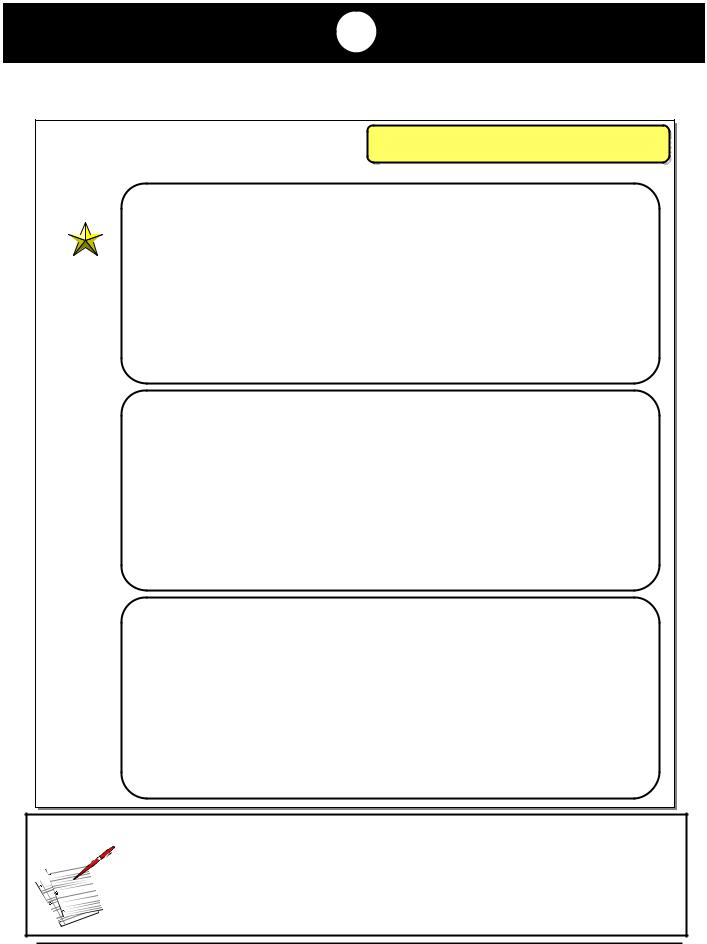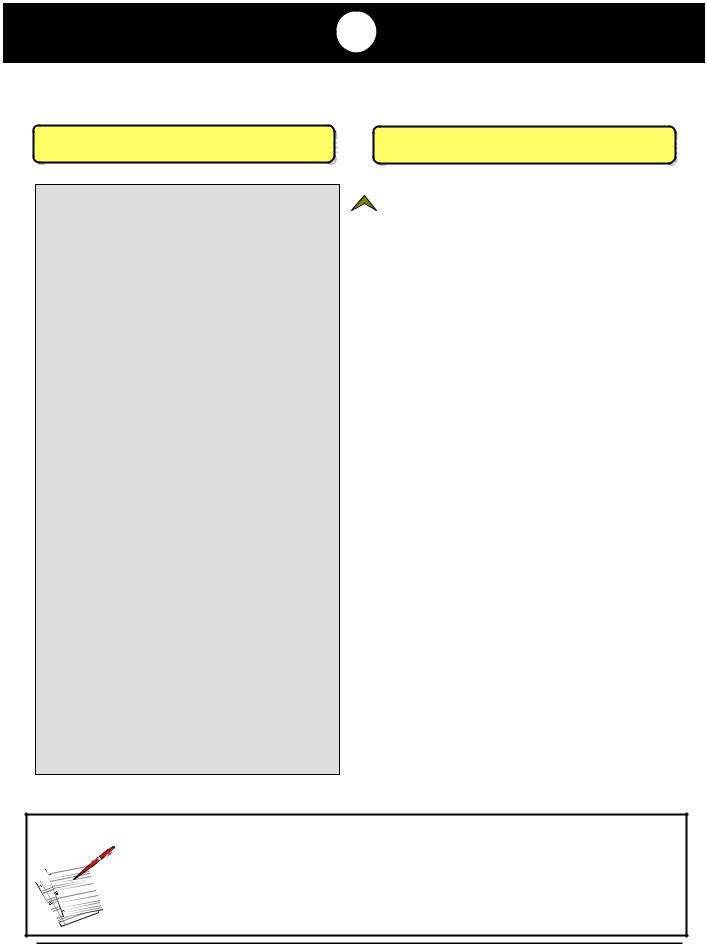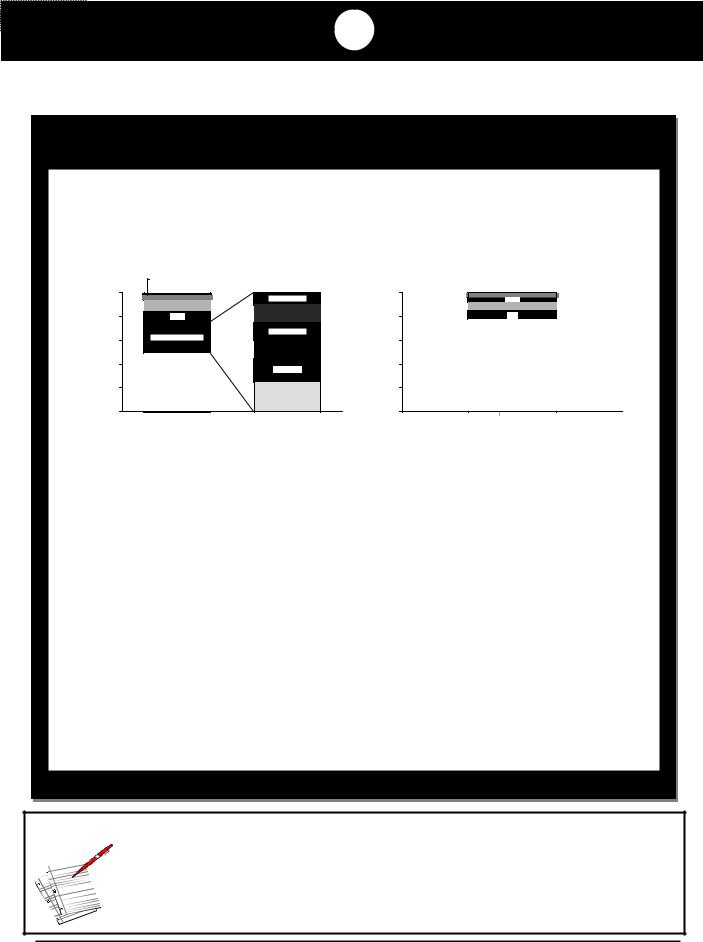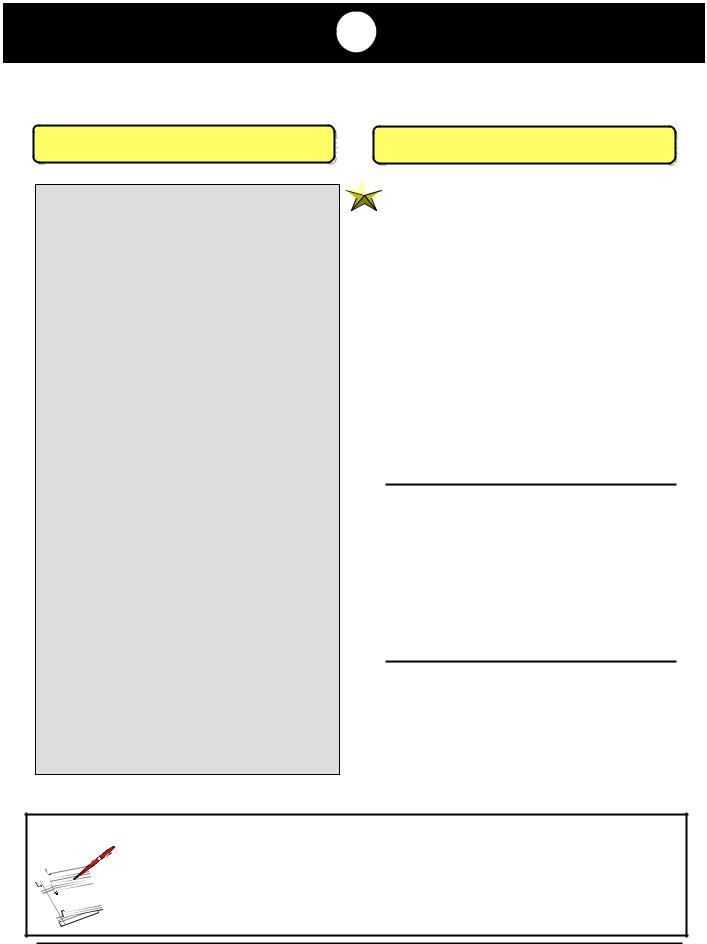
crack the case
.pdf
Fitness Xtreme |
C |
Pack: 004 page 14 of 21
Candidate Review Sheets
A Logical Flow Using the FRAME Method™
A Logical Flow Using the FRAME Method™
F – Form a Plan
This case is a balance between Zone 2, Organization and Zone 3, Organization. The issue is caused by an External Factor, the economy, but the focus is on revenue, costs and organization structure.
Sizing up the value of potential reductions and their impact on revenue early in the case will provide structure for the organizational change discussion.
MVM™
Zone 5
S P E C I A L T
|
|
|
Zone 4 |
|
|
Zone 3 |
Fin |
|
Zone 2 |
Org |
|
|
Op |
|
|
Zone 1 |
|
|
|
Strat |
|
2 |
|
3 |
|
|
|
R |
Volume |
People . |
CA$H |
|
|||
Price |
|
1 |
Fixed |
Systems Measure |
|
C |
D/E |
||
Variable |
Processes
MVM Roadmap™: Here’s a path that will hit the key issues, in order of importance.
1.Start in Zone 2, Operations, Costs. First understand the size of the cost bar and how it relates in proportion to the revenue line. In general, personnel costs will be variable, but FX may believe it needs a “fixed” or minimum set of trainers to do well.
2.Move to Zone 3, Organization, People. Understand the structure of the training staff; then discuss how FX might restructure the staff and their schedules. Relate these new ideas back to the costs.
3.Move to Zone 2, Operations, Revenue. How would changes to the cost bar impact total revenue? Would there be a dip in revenues because the overall “quality of the gym” has declined? Would current members miss having the staff available for personal training and join another gym? Would potential members decide against joining FX if personal training is unavailable?
Purchase additional cases and the book Crack the Case: How to Conquer Your Case Interviews at www.consultingcase.com. |
14 |
|
Copyright © 2004 Turtle Hare Media |
||
|

Fitness Xtreme |
C |
Candidate Review Sheets
Pack: 004 page 15 of 21
F – Form a Plan (cont.) |
Suggested Answers, Diagrams and Behaviors |
Suggested Answers, Diagrams and Behaviors |
“There are several steps to getting to a solution here: First, I’d like to review the costs and find out what kind of savings would be achieved by eliminating the trainers. If it is worthwhile, I would next like to understand the structure of the team and see if there are any win/win solutions to
Good keeping people while at the same time reducing costs. Finally, we should try to gauge the revenue impact of our decision about the training staff.”
(You have a simple 3-step approach, but I have no doubt about where we’re headed. I like the clarity of thought and the fact that each step will involve building a factbase, looking at the data and making a conclusion. I’m anxious to see how you’ll do.)
“Costs and revenues go hand in hand here. I would first like to understand the size of the revenues to get a feel for the business and then see how big our costs are. After that we can review some of the implications of
making organizational changes.”
OK
(I wouldn’t start with revenues when this is so clearly a cost case. I might have quite a few issues I want you to cover in the cost area and if you spend too much time on revenues, we’ll never get there. As for implications, you could have more specifically tied the trainer costs to the revenue implications. You seem confident, so let’s see where you take it.)
“Cost and headcount reduction can be messy so we’ll have to be careful. It would be very easy to anger the whole staff or make them jumpy about losing their jobs as well. Can you provide me with the number of trainers
Weak and their average salaries?”
(I have no idea where you’re taking this. Unfortunately I don’t think you do either. For all data, try to start broadly and then narrow down your requests. I probably have information about the total cost bar which would be helpful. If you find out how much we pay our staff in total without the broader context, it will tell you very little.)
Self Check |
|
MECE (Mutually Exclusive, Collectively Exhaustive) |
|
Natural, not memorized |
||
|
|
|||||
|
|
Bottom line tone |
|
Hits upon key issues |
|
Clarifies if necessary |
|
|
Fluent, not stammering |
|
Open to redirection |
|
Clearly driving the case |
|
|
|
|
|||
Notes:
Purchase additional cases and the book Crack the Case: How to Conquer Your Case Interviews at www.consultingcase.com. |
15 |
|
Copyright © 2004 Turtle Hare Media |
||
|

Fitness Xtreme |
C |
Pack: 004 page 16 of 21
Candidate Review Sheets
A Logical Flow Using the FRAME Method™ A Logical Flow Using the FRAME Method™
R - Read the Audience
Interviewer: Play Chatty Charlie (from Chapter 4) and be willing to help out where necessary. This case was designed to be straightforward, without any curve balls. If the candidate gets stuck, be willing to provide a little data or prodding in the right direction.
SuggestedSuggestedAnswers,Answers,DiagramsDiagramsandandBehaviorsBehaviors
Good Reactions/ Body Language:
•Firm, dry handshake, leaning slightly forward
•High energy
•Consistent eye contact during the introduction
•Warm smile, worn most of the time
•Relaxed manner in small talk and getting situated
•“Ready to talk” body language, sitting on the front half of the chair, eager to discuss the case
Average Reactions/ Body Language:
•Half-hearted handshake
•Average energy
•Frequently breaks eye contact (indicates nervousness or insecurity)
•Forced smile
•A little tense and awkward in getting set up
•Moving around a lot in the chair, leaning or sitting back too far, indicating disinterest or laziness
Poor Reactions/ Body Language:
•Soft, weak or moist handshake
•Low energy
•Little to no eye contact
•No smile
•Awkward conversation; palpable tension
•Sitting completely in the back of the chair; slumping over the desk; putting arms on knees in the football coach position
Self Check |
|
Firm, dry handshake |
|
Attentive listener |
|
Good sense of humor |
|
|
|
||||
|
|
Consistent eye contact |
|
Friendly, warm smile |
|
Fluent with small talk |
|
|
High energy but calm |
|
Engaging |
|
Strong confident voice |
|
|
|
|
Notes:
Purchase additional cases and the book Crack the Case: How to Conquer Your Case Interviews at www.consultingcase.com. |
16 |
|
Copyright © 2004 Turtle Hare Media |
||
|

Fitness Xtreme |
C |
Candidate Review Sheets
Pack: 004 page 17 of 21
A Logical Flow Using the FRAME Method™ A Logical Flow Using the FRAME Method™
A – Anchor a Hypothesis
Did you have an initial thought about the trainers? Cut them? Keep them? In either case it is easy to prepare your mind for the upcoming data by forming a quick hypothesis. After you have it firmly in your mind, think about some of the questions you want to ask that would prove or disprove it.
As you work through any case and the elements of your plan, ask questions that help move your insights forward. Like a detective, you are trying to understand what is true. Keep in mind:
•Simple questions that help you find data
•Common sense about the importance of trainer costs relative to total costs.
•Big picture thinking that keeps some of the more important issues in mind (in this case the dropping of membership fees)
SuggestedSuggestedAnswers,Answers,DiagramsDiagramsandandBehaviorsBehaviors
 Potential Hypotheses
Potential Hypotheses
What were your thoughts here? If you are new to forming a hunch, try one of these simple options below. Anchor it in your mind and as you move through your plan ask questions that will help you answer this hunch. Pay close attention to the data, though, as your hunch may be wrong.
Keep the Trainers
“Trainers can’t cost that much and it is likely that they earn their keep through special member charges. I bet that their presence is value added to members and is seen as a positive for the gym.”
Cut the Trainers
“In my own experience, I never see the trainers adding all that much value. It is unlikely that they are used often and it does seem that there might be some savings potential. I’d like to see the cost data, but I bet there is an opportunity to save some money here.”
Optimize the Trainers
“Keeping or cutting is too black and white. I think there are some inefficiencies that we can remove. Also, I think there are benefits to having the trainers on site as they often help train new members and lend an air of professionalism to the gym. I’m planning to find information that will prove their value and their potential for generating more revenue.”
Self Check |
|
Mental anchor in place |
|
Actionable approach |
|
Keeps driving |
|
|
|
||||
|
|
Logical supports |
|
Prioritized approach |
|
Practical |
|
|
MECE |
|
Defends thoughts |
|
Sees the big picture |
|
|
|
|
Notes:
Purchase additional cases and the book Crack the Case: How to Conquer Your Case Interviews at www.consultingcase.com. |
17 |
|
Copyright © 2004 Turtle Hare Media |
||
|

Fitness Xtreme |
C |
Pack: 004 page 18 of 21
Candidate Review Sheets
A Logical Flow Using the FRAME Method™
A Logical Flow Using the FRAME Method™
M – Mine for the Answer
What kind of questions did you ask? Even though the categories are simple, there are all kinds of questions that one can ask. Consider the following:
Mining Zones
Costs
•What does the total cost bar look like?
-Total annual costs are $6.75M
•What portion of costs do the trainers’ salaries represent?
-Trainer salaries are 9% of total costs.
•How much of the cost is for full-time salaries and how much is for part-time salaries?
-All the trainer salaries are full-time at this point
•At what point will trainers leave due to salary cuts?
-Most of the trainers are looking to make at least $30K per year
Revenue
•What is membership revenue?
-Total annual revenue is $9.5M
•What portion of it is tied to using a personal trainer?
-Personal trainer fees amount to 9% of the total revenue.
•What do we know about members and their use of trainers?
-Some members are heavy users while others never use trainers. All members get one free session with a trainer when they join.
•How many members would leave the gym if trainers were no longer available?
-We don’t have data on how many may potentially leave the gym.
Hybrid Solution
•What portion of the trainer’s time is unused?
-Trainers on average have only two appointments per day (20 days out of the month)
•If we reduce the number of trainers could we still meet demand?
-It would be easy to meet demand with a reduced number of trainers.
•What risk is there to having fewer, higher quality trainers?
-Little risk since there are so many trainers who are unutilized.
Purchase additional cases and the book Crack the Case: How to Conquer Your Case Interviews at www.consultingcase.com. |
18 |
|
Copyright © 2004 Turtle Hare Media |
||
|

Fitness Xtreme |
C |
Pack: 004 |
page 19 of 21 |
Math Zone
M – Mine for the Answer
Make estimates and round your numbers
Plot Your Data
• A few 100% bar charts can help you keep the data straight
Costs in Percent
|
Xtreme Café |
|
100% |
$6.75M |
|
Outsourced Maintenance |
||
|
||
|
Internal Maintenance & Parts |
|
80 |
Other |
|
60 |
Employee Salaries |
|
|
||
40 |
|
|
20 |
Lease Payments |
|
|
||
0 |
Total FX |
|
|
||
|
Annual Costs |
|
Revenue in Percent |
||
$1.8M |
100% |
$9.6M |
|
Maintenance |
Café |
||
|
Classes |
||
Part-time Admin |
|
Personal Training |
|
80 |
Spa |
||
|
|||
Spa/ Beauty |
|
|
|
|
60 |
|
|
Full-time Admin |
|
|
|
|
40 |
Membership |
|
Sales Staff |
Dues/ Fees |
||
|
|||
|
20 |
|
|
Trainers |
|
|
|
Annual |
0 |
Total Fitness Xtreme |
|
|
|||
Salary Costs |
|
Annual Revenue |
|
Is management barking up the right tree?
•Within our total cost bar, lease payments is the largest block. Assume it’s a fixed cost.
•Employee Salaries is the next largest area, so management is right to focus there.
•Trainer Salaries is the largest item within Salary Costs, and there is no guarantee that they are helping to retain or attract members. We could also look at Sales Staff, but since memberships are down, we don’t want to reduce there. Leave the other blocks for additional discussion if there’s time.
•For perspective, note that membership dues comprise 80% of revenue. Training fees contributes only 7%.
Quick Insights
•Trainers are a break-even proposition. Trainers are barely paying for themselves. Without changing their salary structure, we know that their value lies in attracting/retaining members, not generating revenue
•Few members use personal training. Trainers perform 900 (18 trainers x 2.5 sessions x 20 working days) sessions per month. Since the average trainee meets 2x per week, 450 different people are being trained. That’s less than 5% of the 14,000 membership base.
•To be valuable, trainers must be offering other intrinsic value. Trainers could be adding value by attracting new customers or by giving tips throughout the day that the members appreciate.
Self Check |
|
Data oriented |
|
Quick to interpret |
|
Collaborative style |
|
|
|
||||
|
|
Facile with numbers |
|
Questions are specific |
|
Explains gut check |
|
|
Focused, not flustered |
|
Nimble thinker |
|
Ballparks numbers first |
|
|
|
|
|||
Notes: |
|
|
|
|
|
|
Purchase additional cases and the book Crack the Case: How to Conquer Your Case Interviews at www.consultingcase.com. |
19 |
|
Copyright © 2004 Turtle Hare Media |
||
|

Fitness Xtreme |
C |
Pack: 004 page 20 of 21
Candidate Review Sheets
A Logical Flow Using the FRAME Method™ A Logical Flow Using the FRAME Method™
E – End the Case
As you neared the end of the case, did you have a clear, data-driven conclusion? The following questions should have been top of mind:
•How do I wrap this up?
•So what’s my conclusion? What have I decided to do with the trainers?
•The management team is going to get together in about five minutes and wants to hear my conclusion. What am I going to say?
SuggestedSuggestedAnswers,Answers,DiagramsDiagramsandandBehaviorsBehaviors
 Good Ending: “Our investment in trainers today
Good Ending: “Our investment in trainers today
represents about 10% of our overall costs, but provides little more than break-even revenue. Since about 1/3 of the trainers’ time is spent on welcoming members and walking the aisles, the real question is whether they are providing some intrinsic value that, when removed, would hurt our revenue. For instance, if all 450 members being trained in one-on- one sessions left, we’d lose about 3% of our annual revenue. Since trainers are only utilized two-thirds of the time, we could reduce the staff by a third. But this would only save about a quarter million in annual revenue. Another idea would be to boost revenue and loyalty by giving away their time or discounting the hourly rate. I recommend we explore these two options.”
(Wow! You have a lot to say, but it is all good. I especially like your data orientation and how you developed a clear recommendation. Good job!”
OK Ending: “Trainers really don’t cost a lot and they seem to provide a necessary welcoming function to new members. We risk making a poor impression on new members if we don’t have them. Since their utilization is at 66%, we could cut a few, but the savings would be minimal. I recommend we focus on boosting membership instead.”
(You answered the question clearly and used data to support your thinking. Your next steps, though, need better support. Good work overall.)
Poor Ending: “Basically the trainers are a nice element, but are adding very little in the way of revenue beyond paying for their own existence. The tricky issue is whether or not members value their presence anyway. I’d keep them.”
(And what exactly were you doing for the last twenty minutes? You didn’t make a lot of progress. Be sure to use data when making your closing statement.)
Self Check |
|
Several clear points |
|
Well integrated |
|
Concise |
|
|
|
||||
|
|
Persuasive |
|
Includes next steps |
|
Credible |

 Notes:
Notes:
Purchase additional cases and the book Crack the Case: How to Conquer Your Case Interviews at www.consultingcase.com. |
20 |
|
Copyright © 2004 Turtle Hare Media |
||
|

Fitness Xtreme |
C |
Candidate Self Assessment
Pack: 004 page 21 of 21
Planning & Logic |
Excellent |
|
|
|
|
Poor |
|
||||
1 |
2 |
3 |
4 |
5 |
6 |
|
|||||
1. |
I had a plan to solve this case. |
|
|||||||||
|
|
|
|
|
|
|
|||||
|
|
|
|
|
Very clear |
|
|
Fuzzy |
|
Not clear at all |
|
|
|
|
|
|
|
|
|
|
|
|
|
2. |
My plan was MECE. |
1 |
2 |
3 |
4 |
5 |
6 |
|
|||
|
|
|
(Mutually exclusive, collectively exhaustive) |
No overlaps |
|
|
|
Several overlaps |
|
||
|
|
|
|
|
and gaps |
|
|
|
and full of gaps |
|
|
|
|
|
|
|
|
|
|
|
|
|
|
3. |
I trusted my plan and referred to it often. |
1 |
2 |
3 |
4 |
5 |
6 |
|
|||
|
|
|
|
|
Used it, |
|
|
|
|
I basically |
|
|
|
|
|
|
referred to it often |
|
|
|
forgot about it |
|
|
|
|
|
|
|
|
|
|
|
|
||
Communication & Composure |
|
|
|
|
|
|
|
||||
4. |
I was calm and collected. |
1 |
2 |
3 |
4 |
5 |
6 |
|
|||
|
|
|
|
|
Calm, confident |
|
Off and on |
|
Sweaty, shaky |
|
|
|
|
|
|
|
and client ready |
nervousness |
|
mess |
|
||
|
|
|
|
|
|
|
|
|
|
|
|
5. |
I carried the discussion well. |
1 |
2 |
3 |
4 |
5 |
6 |
|
|||
|
|
|
|
|
Just the right |
|
Occasionally |
I didn’t hold the |
|
||
|
|
|
|
|
amount of back |
|
awkward |
|
interviewer’s |
|
|
|
|
|
|
|
and forth |
|
|
|
|
attention |
|
|
|
|
|
|
|
|
|
|
|
||
6. |
I drove the case. |
1 |
2 |
3 |
4 |
5 |
6 |
|
|||
|
|
|
|
|
Clearly in control, |
|
I took control |
|
Adrift at sea |
|
|
|
|
|
|
|
I took the case to |
|
sometimes |
|
|
|
|
|
|
|
|
|
a conclusion |
|
|
|
|
|
|
|
|
|
|
|
|
|
|
|
|
|
|
Analytics
7. I analyzed the data well on a piece by piece basis.
1 |
2 |
3 |
4 |
5 |
6 |
Quick to insights, |
|
Slow on the |
Lots of mistakes, |
||
no math errors |
|
uptake, some |
|
I didn’t get the |
|
|
|
|
math mistakes |
|
insights |
8. I integrated data well and reached insights (saw the big picture).
1 |
2 |
3 |
4 |
5 |
6 |
Quick to “connect |
I missed some |
I missed all the |
|||
the dots” and see |
connections |
linkages between |
|||
how it all ties |
|
|
|
|
the data |
Recommendation
9. My final recommendation was to the point and data driven.
1 |
2 |
3 |
4 |
5 |
6 |
Used facts and |
|
|
|
I tried to solve |
|
data to back up |
|
|
|
the case from |
|
my thoughts |
|
|
|
|
my gut |
10. I was persuasive in making my final points.
1 |
2 |
3 |
4 |
5 |
6 |
Persuasive points, |
|
|
|
I couldn’t even |
|
passion and a |
|
|
convince myself, |
||
bottom-line tone |
|
|
|
zero passion |
|
Total Score:
(10-60)
Do this self assessment before asking the interviewer for feedback. How did your numeric score compare to the one the interviewer gave you? What is your top priority going forward?
Purchase additional cases and the book Crack the Case: How to Conquer Your Case Interviews at www.consultingcase.com. |
21 |
|
Copyright © 2004 Turtle Hare Media |
||
|

Green Thumb
Green Thumb is having trouble keeping up with the “greening” of America. Environmentalists and the back-to-nature movement threaten to spoil Green Thumb’s dominance in the chemically enhanced lawn market. Can you help management find a future in this changing landscape?
Case Pack: 005
Difficulty (1-5): 


Crack the Case:
How to Conquer Your Case Interviews
consultingcase.com
Purchase additional cases and the book Crack the Case: How to Conquer Your Case Interviews at www.consultingcase.com. |
005 - Green Thumb 1 |
|
Copyright © 2004 Turtle Hare Media |
||
|

Green Thumb
Case Pack: 005


 Case Answers and Interviewer Notes
Case Answers and Interviewer Notes
Candidates should not read through this pack until completing the case. Remove pages 3 through 6 before beginning the case.
I
Pages
7 - 13
Interviewer
•Prep time: This case is rated 3 stars in terms of difficulty and a lot of data. Expect to invest at least 10 minutes preparing. Review the following:
-Interviewer Fact Sheet (p. 7)
-Case at a Glance (p. 8-9)
-Data Distribution and Math Zone (no handouts, p. 10-11)
-Re-routers and Heavy Lifting (p. 12)
-Candidate’s “Mine for the Answer” sheet (p. 18)
•Giving the Case: Start the interview realistically - greet, shake hands, chat and introduce the case. To make the interview more challenging consider taking on an interviewer personality. For tips look at p. 16. Fill out the Interview Feedback sheet and discuss strengths and weaknesses with the candidate.
C
Pages 14 - 22
Candidate
•Working with an interviewer: Remove pages 3 through 6 to take notes and do your
work. Give the rest of the pack to your interviewer. Interviewer prep is about 10 minutes for this case.
•After the Interview: Rate yourself using the Self Assessment sheet in the back of the case pack. Review the feedback score and comments from your interviewer and discuss ways to improve. Review the suggested answers in the case.
•Self-study: Remove pages 3 through 6 to take notes and do your work. Remove the data distribution sheet and place it face down. Follow the three Self Study Steps listed on these sheets. This self study method will help you form your plan, practice asking good questions and improve your ability to pull insights from the data slides. Keep in mind that you will benefit most from working with an interviewer who can evaluate your performance objectively.
Throughout these notes references will be made to the MVM™ (Maximum Value Model) and the FRAME Method™, the building blocks of the One Model/One Method™ approach to case interviews. Full descriptions of these unique tools, as well as additional cases, can be found in the book, Crack the Case: How to Conquer Your Case Interviews, available at www.consultingcase.com.
The facts of this case, company names and answers are completely fictitious. Any resemblance to actual people, places, companies and strategic outcomes is entirely coincidental.
Purchase additional cases and the book Crack the Case: How to Conquer Your Case Interviews at www.consultingcase.com. |
005 - Green Thumb 2 |
|
Copyright © 2004 Turtle Hare Media |
||
|
